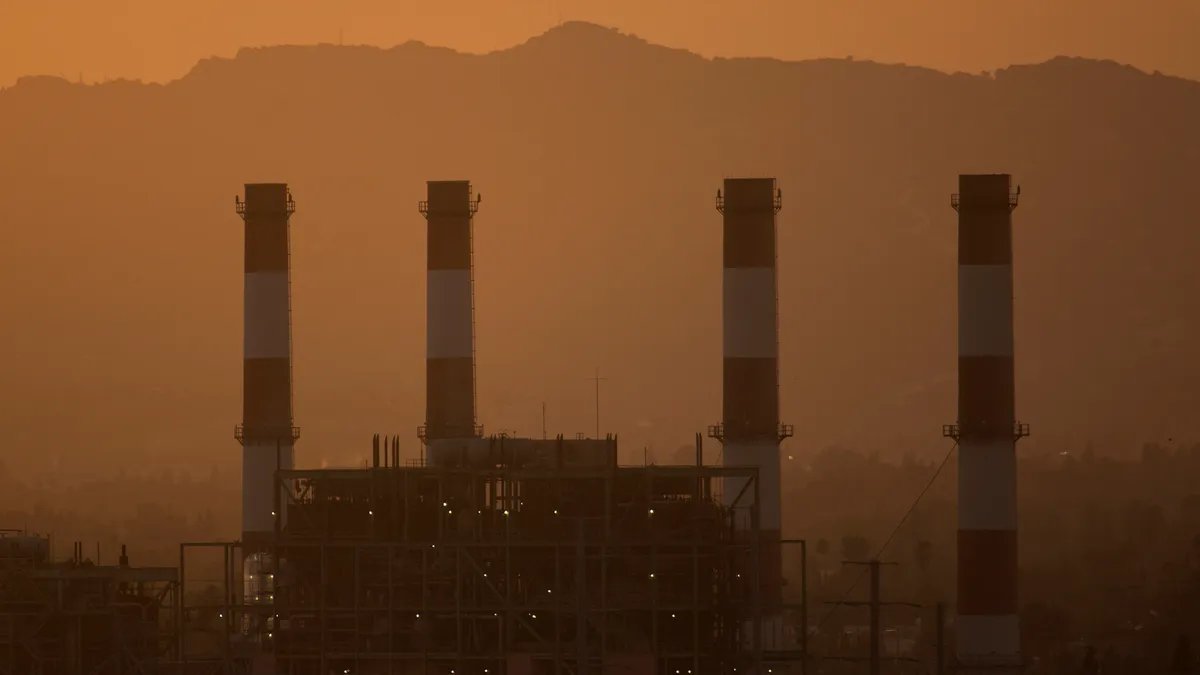Dive Brief:
- Duke Energy last month filed a revision to its Carolinas Resource Plan to propose a new methane gas plant in South Carolina, citing an “unprecedented” demand for energy.
- Environmental groups including the Sierra Club and the Southern Environmental Law Center oppose the revision, and SELC Senior Attorney David Neal said the group is concerned that the load growth Duke projects might still be “somewhat speculative.”
- “Modern natural gas plants have less than half the carbon emissions of our coal plants – replacing coal with cleaner and more efficient natural gas drives down emissions,” Duke spokesperson Bill Norton said. “Natural gas is critical to meet customer needs while enabling coal plant retirements.”
Dive Insight:
In a Jan. 31 release announcing the resource plan update, Duke said that South Carolina’s population and economy are “booming,” compelling the utility to add new energy generation resources.
“We’re already projecting eight times the load growth we anticipated just two years ago,” said Mike Callahan, Duke Energy’s South Carolina president. “This additional demand for energy is unprecedented – historic in both size and speed.”
Neal said he remains cautious about the load growth projections that stem from announced new projects like data centers, because “it’s not clear yet how committed any of those are.”
Between August and January, Duke revised its net load forecast for the Carolinas, from an estimate of eight large site projects that would demand 8.7 TWh a year coming online by 2033 to 35 large site projects that would demand 24.7 TWh a year.
“Some of those projects could drop out and decide to site someplace else,” Neal said. “And I think, actually, a really good question is how much of that new load is customers that are coming here because of the carbon plan requirements.”
Companies that have their own clean energy targets might be “counting on Duke to actually fulfill its requirements to reduce carbon pollution so that those companies can have assurance that they're going to be on a pathway to reducing their own carbon pollution,” he said.
Norton said that the “24/7” reliability of natural gas is key to Duke’s goal of retiring coal plants, as without it those plants would have to “run more and retire later.”
But environmental groups criticized natural gas as a poor solution, with Sierra Club Field Manager Mikaela Curry saying in a release that it leaves “customers stuck with skyrocketing energy bills while our communities suffer from polluted air and water.”
”It seems like their instinct is ‘Well, we need more gas resources — a lot more gas resources,’ which ignores the legal requirement to reduce carbon pollution 70% below 2005 levels by 2030,” Neal said. “All their preferred plans say ‘Oh, we'll get there by 2035.’”
Neal said the SELC would prefer to see Duke “be serious” about the development of offshore wind. While the updated plan commits to procuring 2.4 GW of offshore wind by 2035, “their near term action plan isn't really reflecting the urgency of needing to actually get that done,” he said.
“They're planning to spend far more money in the next couple of years related to nuclear development than they are on offshore wind, even though we know offshore wind is an existing technology that can be built, whereas all of their plans for nuclear rely on designs that haven't been approved by the Nuclear Regulatory Commission,” he said.
Duke’s updated plan includes a projection of 600 MW of advanced nuclear coming online by 2035. The utility has a procurement target of more than 1.5 GW of solar in 2024, then adding between 2.7 and 3.4 GW over the next two years. Duke also plans to develop 457 MW of standalone storage by 2026, and procure 956 MW of storage paired with solar in that timeframe.
Whether or not groups like the SELC pursue litigation against the updated plan will depend on the findings of the Public Service Commission of South Carolina, or PSC, Neal said. Kate Mixson, SELC senior attorney, said the group “[looks] forward to making our case” to the PSC later this year.
Neal said that some aspects of Duke’s revised plan “make a lot of sense,” including the expansion of transmission to allow the integration of large-scale solar projects, and increases in energy efficiency. He said the SELC “worked closely” with Duke on its new tariffed on-bill program in North Carolina that will go into effect this year and allow for a “much wider-scale adoption” of energy efficiency upgrades.
“There's a lot of promise there, and I think Duke's on the right track on a lot of those fronts,” Neal said. “But it's really about doubling down on those investments, and those resources, as opposed to doubling down on new gas.”
The PSC approved Duke’s proposal to revise its plan and will hold a hearing on the revisions in mid-September, with a decision likely coming in November, Duke said.















